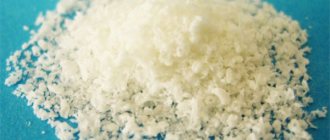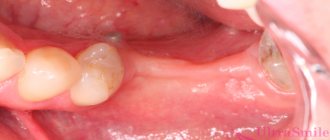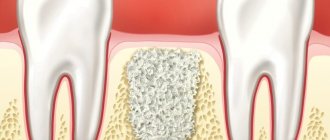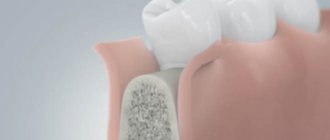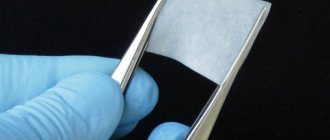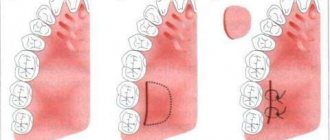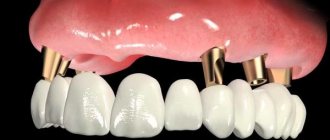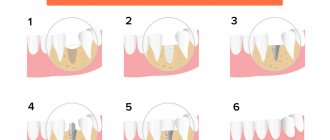- August 9, 2018
- Health
- Timoshenko Mikhail
Bones are the strong framework of the human body that withstands mechanical stress every day. Over time, the skeleton may weaken. Therefore, it is extremely important to resort to solutions aimed at building bone mass when you are young. If you do not pay due attention to this point, then in adulthood the risk of developing osteoporosis increases significantly. The disease poses a significant health hazard, as it causes fragility and increased fragility of bones. Let's find out how to build bone mass, shall we?
What points should you pay attention to in childhood?
When dealing with the physical development of their own children, parents should understand that at the age of 30, bone tissue depression will inevitably occur. Therefore, it is important from early childhood to resort to measures aimed at reducing the risk of developing symptoms of osteoporosis. It's about finding a balance between daily physical activity and a balanced, comprehensive diet.
According to the observations of researchers, regular consumption of all types of cabbage, green salad, onions, cucumbers, tomatoes, garlic, apples, celery, and exotic fruits brings undoubted benefits to the developing children's skeleton. In combination with exercise, such a varied diet makes it possible to eliminate the progressive reduction of bone tissue and the development of diseases of the musculoskeletal system.
Why is bone augmentation necessary?
Bone augmentation (osteoplasty, sinus lift, bone replenishment) is the process of replenishing hard bone in the area where a dental root-shaped implant is subsequently planned to be installed.
Why is it important to build bone tissue? Because due to the absence of a tooth in the socket for a long time, the bone gradually decreases, and future implantation, in fact, loses its meaning. If there is not enough bone tissue, over time the implant loses its stable position, and the risk of rejection is high - all the work on its installation will have to be redone, again incurring financial losses and experiencing moral and physical risks.
Note! Sometimes bone grafting is required due to the physiological characteristics of the human jaw structure. Also, due to the fact that the bone decreases, inflammation of the soft tissues occurs (periodontitis, periodontitis).
The roots are located in the so-called alveolar processes, that is, the spongy part of the bone. Tooth roots constantly keep this area in good shape, active blood circulation occurs. In the absence of a tooth, the pressure on the jaw stops; accordingly, the bone tissue dissolves, resorption (loss) of the jaw bone occurs, and atrophy of the alveolar process occurs.
Bone tissue augmentation involves supplementing it with material that activates natural growth. Thus, the new bone is strengthened, its volume increases to the desired size.
About calcium intake
It is a well-known fact that increasing bone mass depends on getting an abundance of calcium into the body. The trace element is concentrated in the skeletal structures, making the tissues strong and hard. A developing organism requires at least a thousand milligrams of the substance every day.
How to increase bone density? For these purposes, it is recommended to base the diet on the following products:
- Milk, yogurt, hard cheese.
- Cereal porridge.
- Legumes.
- Sea fish.
- Cabbage, broccoli, spinach.
- Nuts.
Bone grafting for periodontitis
Treatment for periodontitis involves removing teeth if they cannot be saved. To restore lost teeth, the dentist offers implantation or prosthetics. To install an implant, a certain amount of bone tissue is required.
For implantation in advanced periodontitis, bone grafting is required. The plastic surgery method involves filling the jaw with bone chips. After just six months, you can place an implant. During this time, osteoplastic granules will allow you to restore damaged areas, form a vascular network and new bone, making it sufficiently dense and strong.
Bone grafting for periodontitis requires high professionalism and extensive experience from the doctor. The quality of the materials used plays an important role. Possible application:
- bone tissue of the patient or donor,
- synthetic materials.
Bone grafting takes at least an hour. The duration depends on the chosen method. Main stages of the procedure:
- the dentist gains access to the affected areas of the bone,
- using a membrane, creates a cavity, fills it with bone chips,
- the intervention area is covered with membrane material,
- puts stitches, which are removed after 7-8 days.
The method has a number of contraindications:
- inflammatory processes or neoplasms in the sinuses,
- pathology of bone tissue,
- bleeding disorders,
- oncological diseases.
It will be necessary to postpone the operation during pregnancy and breastfeeding.
Vitamin D intake
Vitamin D ensures better absorption of calcium by body tissues. The main sources of the substance are: fatty fish, egg yolk, beef liver, mushrooms.
Being in the sun is considered beneficial. The action of ultraviolet radiation causes a concentration of vitamin D in the skin structures. However, doctors advise staying in direct sunlight for no more than ten minutes a day unless special protective creams are used.
The trace element is available in dietary supplements. Such drugs are recommended to be used only by those people who experience an acute deficiency of the vitamin in the body. Unauthorized use of food supplements containing the substance can lead to negative consequences for the body. Therefore, a doctor’s permission must be issued for such actions.
What is bone grafting for dental implants?
Bone grafting in dental implantology is the augmentation of bone tissue, which is often necessary to perform turnkey dental implantation. On average, 3 to 6 months after the loss of a tooth, the process of bone tissue atrophy begins at the site of its removal, due to the fact that the bone ceases to bear the load. This process reaches its peak after about a year, and if you do not contact an implantologist immediately after removing unhealthy teeth, there is a high probability that additional bone augmentation surgery will be required later. It should be noted that plastic surgery, even in situations where there is a lack of jaw bone tissue, is not always required and not for everyone. The decision on the need for it will be made by the doctor, based on the situation of the individual patient.
There are cases when the bone tissue in the place of a missing tooth remains unchanged for many years, but this is rather an exception to the rule. More often, quite pronounced bone atrophy and even tilting or displacement of teeth towards the defect are observed.
Photos of bone grafting at various stages of its implementation
What causes bone loss?
The following causes the launch of a pathological process in the body:
- Addiction to tobacco products. Smoking abuse leads to systematic destruction of bone structure. A sexually mature person who inhales tobacco smoke every day is at greater risk of getting a fracture than a person who does not have a bad habit. According to the results of special studies, even passive smokers are at risk.
- Drinking a lot of caffeine. The entry of a significant amount of tonic into the body interferes with the normal absorption of calcium by body tissues. To avoid harming your own health, researchers do not recommend drinking more than two cups of coffee per day.
- Development of alcohol dependence. Regular drinking of alcohol causes bone loss. The acceptable limit is one glass of wine or beer over several days.
What types of bone grafting are there?
Bone grafting of the lower jaw in the lateral regions is necessary in case of a decrease in the height and width of the alveolar process and a reduction in the distance to the mandibular canal. Significant loss of bone volume in the lower jaw can result in a change from the normal bite to a mesial bite (where the lower jaw moves forward).
Bone grafting of the alveolar process of the upper jaw is associated with bone resorption and the formation of a thin and sharp alveolar ridge. The difficulties of plastic surgery in this area are associated with the task of achieving an optimal cosmetic result.
Bone grafting of the lateral sections of the upper jaw is called sinus lifting, since the maxillary sinuses, or sinuses, are located in this area. There are closed and open sinus lifts, and they differ in the way they penetrate the bone.
Effect of training on bone mass
Leading a sedentary lifestyle has the most negative impact on the condition of the skeleton. The statement is a fact proven by numerous studies and medical observations. Doing physical work, all kinds of exercises, morning exercises, on the contrary, help strengthen bone structures.
How to build bone mass through exercise? Doctors recommend doing physical activity at least 30 minutes a day. Among the most effective workouts that strengthen the skeleton are:
- Walking.
- Jogging.
- Going up and down stairs.
- Dancing class.
- Biking, roller skating, skiing, skating.
- Performing jumping rope.
Professional trainers advise resorting to strength training. It's about lifting weights, using machines that provide resistance. Various parts of the body should be worked out qualitatively: legs, arms and shoulders, back, chest. However, it is not at all necessary to use all muscle groups in training every day. It is enough to alternate workouts.
How much does bone augmentation surgery cost?
The final cost depends on several factors:
- selected type of procedure;
- intervention zones during surgery;
- the use of additional elements (for example, a barrier membrane);
- the general health of the patient;
- individual characteristics of the body.
For example, a closed sinus lift using microsurgery technology costs from 20 thousand rubles. The cost of an open operation to replenish the volume of tissue in the upper jaw ranges from 47 thousand rubles.
In any case, the indicated cost is basic and may vary based on the patient’s clinical situation. The exact budget for the work can be announced during the initial consultation.
Scenarios for tooth restoration against the background of periodontitis
Remember that affected teeth are a source of infection. It is on them, on their porous surface, that a huge number of pathogenic microorganisms accumulate. If implants with an active surface are placed next to such teeth, even the most resistant ones, which contain chemical elements that contribute to the healing of bone cells (such as SLA-Active from Straumann and Ti-Ultra from Nobel Biocare), they still will not are able to cope with a massive attack from all sides and bone tissue atrophy.
PARTIAL IMPLANTATION WITH REMAINING TEETH
- the depth of periodontal pockets is less than 8 millimeters,
- local foci of inflammation, swelling and itching are observed,
- mobility of teeth I and II degrees,
- bone quality type II and III,
- no suppuration and periodontal abscesses,
- teeth are in satisfactory condition,
- healing potential is medium to high.
We invite you to read: How to restore tooth enamel at the dentist
REMOVAL OF ALL TEETH AND COMPLEX IMPLANTATION
- teeth in the oral cavity are affected by diseases,
- there is degree III mobility of the remaining teeth,
- formation of deep periodontal pockets of more than 8 millimeters,
- purulent discharge from periodontal pockets,
- exposure of the neck of the teeth,
- abundant hard dental deposits,
- healing potential is low,
- severe atrophy of bone tissue.
Vladimir Ivanovich, 62 years old
“I had a difficult situation - there were almost no teeth left, it was painful, it was difficult to eat, there was constant psychological discomfort from these problems. I went to the clinic and everything was done quickly, professionally and competently! Incredible work and stunning results that are hard to believe. But he's real! Thanks to the doctors for my new life!”
- forget about bad breath
- communicate without hesitation
- refuse complex, lengthy and expensive treatment of periodontitis
- start living without constant visits to the dentist WITHOUT LIMITATIONS
On day 2-3, a fixed prosthesis with an elastic acrylic base is installed. It gently envelops the gums and does not cause pain at all, even in the presence of an inflammatory process. There remains a functional space between the base of the prosthesis and the gums, which allows for hygienic care, which is especially important in the presence of gum inflammation.
In addition to the presence of inflammation of periodontal tissues, women should also pay attention to the state of hormonal levels, and, if necessary, undergo additional examination by an endocrinologist. Read more about the features of dental implantation in women {amp}gt;{amp}gt;{amp}gt;
earlier
Now
Patient history
“I arrived on Thursday, and on Tuesday I was already able to talk, eat, drink and smile with MY OWN teeth. I was pleasantly surprised by the work. Honestly, I didn't expect this. Here I saw what real work is: just installing the prosthesis took at least 2 hours, the fit was perfect, down to the millimeter! Many thanks to the doctors!”
Treatment at the Dent Prestige clinic
Do you need to restore several teeth due to chronic gum disease? Contact us! You can get dental implants in Maryino at an affordable price. Our dentists have extensive experience in bone grafting for periodontitis and other oral diseases. For each patient, the specialist develops an individual program for restoring lost teeth.
The doctor will tell you more about the methods of implantation and preparation for it at a preliminary consultation. To make an appointment, fill out the form on the website, request a call back or call the phone number provided. The administrator will help you choose the date and time of your visit.
What surgical treatment methods exist in dentistry?
At the initial stages of the development of these diseases, a complex of treatment consisting of medications for the gums and saturation of tooth enamel with fluoride ions is possible. Special gels and ointments with a high fluoride content enhance the natural “immunity” of teeth, protecting them from the development of malignant bacteria.
At later stages of disease development, the doctor prescribes surgical intervention.
Operations are carried out in case of severe deformation and deposited periodontal “pockets”. More details about each surgical treatment method:
Sealing . Sometimes the cause of the disease is an incorrectly placed filling or a cracked tooth.
Their sharp edges can cause injuries to the buccal mucosa. Then microbes , which spread to the entire surface of the oral mucosa. To correct the problem, the old filling is removed or the tooth is cleaned and filled again.
Ultrasound. Using a special apparatus, it is fed into the gum tissue antibacterial medicine.
After that, ultrasound radiation is applied to the oral cavity, and the medicine is distributed throughout the gum. The method can be used even with large “pockets”.
